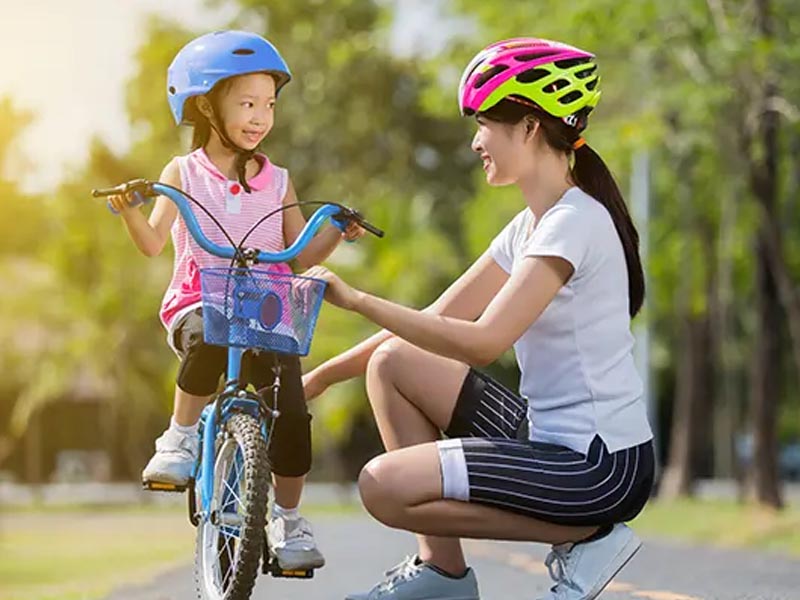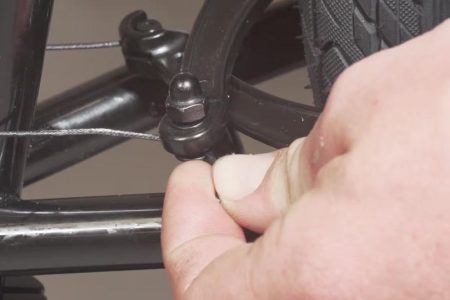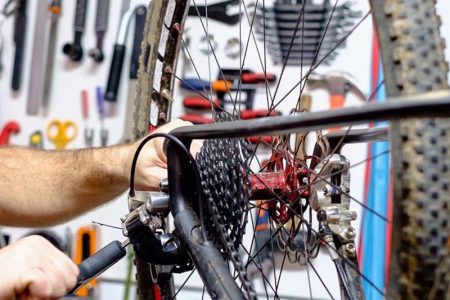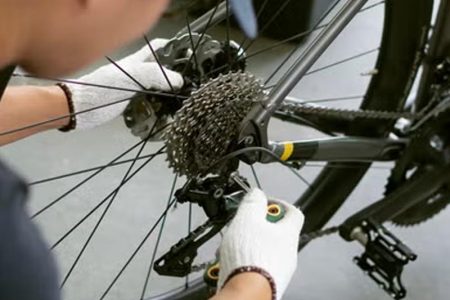Spending time on a bike ride with your child can be one of the most rewarding experiences. Whether it’s cruising through your neighborhood or hitting a local park trail, cycling offers a fun, active way to bond as a family.
For kids, every ride is an adventure. For parents, it’s a chance to nurture confidence while exploring the outdoors together. But before setting off, safety preparation is essential, especially when young riders are involved.
Unlike solo cycling, riding with children means managing two bikes, including your bike and the junior bike, and prioritizing a child’s safety and skill level.
Kids are still developing coordination and road awareness, making them more prone to quick stops, distractions, or balance issues. With the right prep—from safety checks to protective gear—you can ensure your family ride is smooth, safe, and filled with fun.
Why Safety is Non-Negotiable When Biking with Children
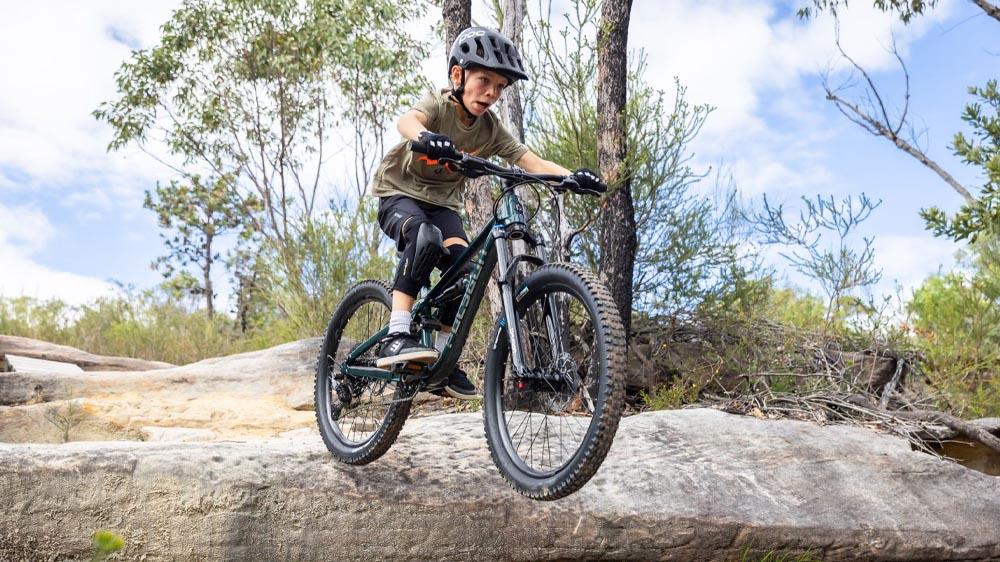
Riding with kids on family bike rides presents unique challenges compared to solo rides or outings with other adults. You’re not only managing your own bike and surroundings but also vigilantly monitoring your child’s well-being throughout the entire journey.
Here’s why thorough safety preparation should always be your top priority:
- Children are Developing Riders: Kids are naturally curious and full of energy, which can also make them unpredictable. They might brake suddenly, lose balance unexpectedly, or become distracted by elements that adults would easily disregard.
Due to their inexperience, they also possess a lower awareness of road hazards and a slower reaction time to potential dangers.
- Dual Focus for Parents: As a parent, your attention is divided between maintaining your own safe ride and closely supervising your child’s actions.
You need the ability to react swiftly, offer guidance, and at times, even physically assist them, all while ensuring your own safety.
- Accidents Are a Reality: Even in seemingly safe environments, minor spills and scrapes are always a possibility. The objective isn’t to eliminate every single risk, but rather to be adequately prepared for them.
With the right proactive measures, you can significantly reduce the likelihood of injury and ensure your family rides remain smooth, enjoyable, and memorable.
Essential Gear for Safe Rides
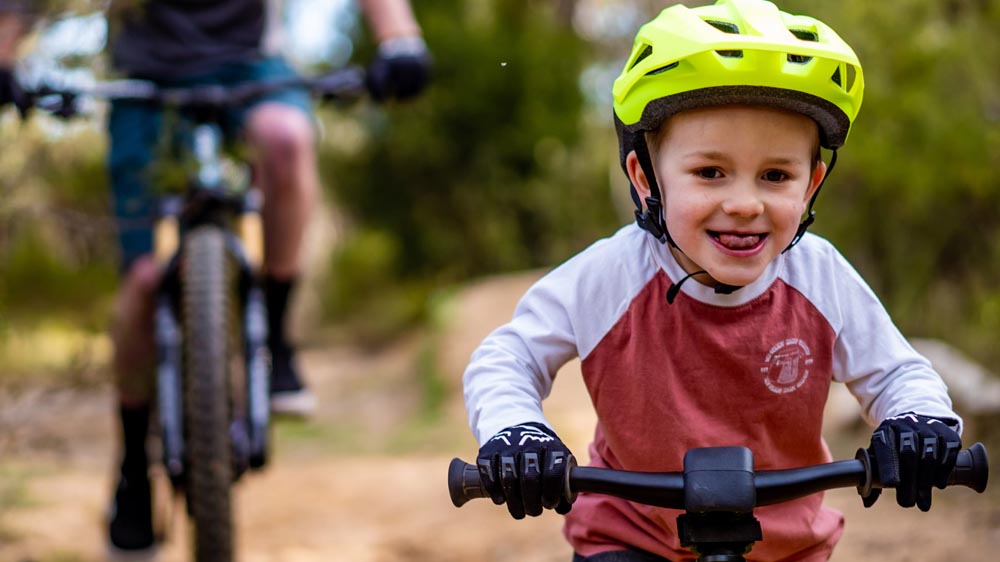
When it comes to safe family bike rides with your child, the right gear makes all the difference. Here’s what to check before you head out:
- Helmet: Choose a well-fitted, certified helmet that covers the forehead and fastens securely. Set the example by wearing one, too.
- Gloves: Help protect little hands and improve handlebar grip.
- Pads: Elbow and knee pads are great for beginners still learning balance.
- Protective Eyewear: Use sunglasses or sports goggles to protect against debris and sun glare.
- Bright Clothing: Visibility matters. Choose reflective or colorful apparel to help others spot your child.
Whether on a kids bike or junior bike, this gear keeps safety top of mind while building good cycling habits.
Quick Bike Inspection Checklist
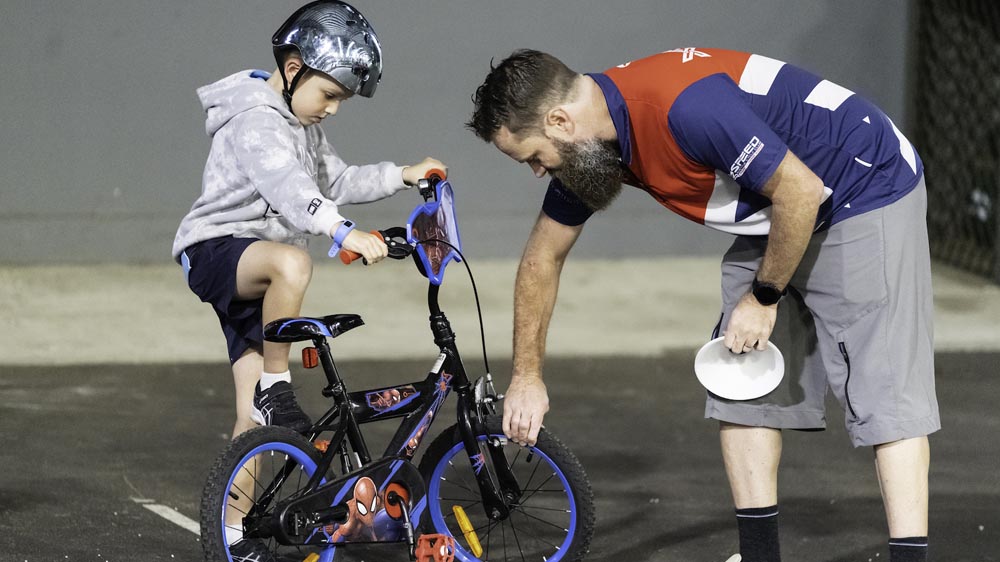
Before every ride, perform a quick safety check:
- Brakes: Make sure they respond well without squeaking or slipping.
- Tires: Feel for firmness and top up air if needed.
- Chain: Check for rust or dryness; apply lubricant as needed.
- Seat Height: Kids should be able to touch the ground comfortably.
These checks help ensure your child’s bicycle for kids is ready for a safe ride.
Crafting a Safe & Fun Cycling Route
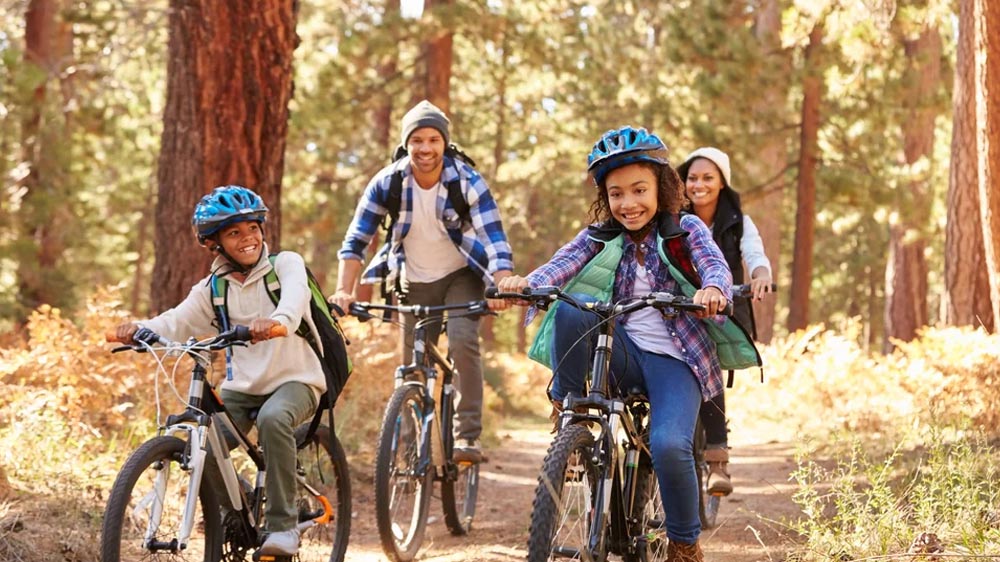
When cycling with children, the chosen route significantly impacts the overall experience. A well-planned path minimizes stress for you and maximizes enjoyment for your child.
- Prioritize Bike-Friendly Zones: Opt for routes specifically designed for cycling, such as dedicated bike paths, multi-use park trails, or quiet residential streets.
These areas generally have less vehicular traffic and slower speeds, making them considerably safer for children on their kids’ bike or junior bike.
Steer clear of busy main roads or high-traffic areas, even if you’re familiar with them, as unpredictable situations can arise quickly. A bicycle for kids is best enjoyed where they can ride at their own comfortable pace without constant pressure from passing vehicles.
- Keep it Manageable: Especially for newer riders, avoid ambitious mileage goals. Begin with shorter, achievable distances that align with your child’s stamina and confidence.
A gentle 1-2 mile loop in a park or quiet neighborhood is often perfect for beginners. You can gradually extend ride lengths as your child gains comfort and proficiency on their junior bike.
Always pay close attention to their energy levels and mood, and don’t hesitate to cut a ride short if they’re tired or losing interest.
- Incorporate Engaging Stops: Transform the ride into a mini-adventure by including planned stops your child will anticipate.
This could be a playground, a scenic overlook, or even a designated spot for a quick snack and water break. These pauses allow kids to rest, explore, and stay motivated, significantly enhancing the overall cycling experience.
- Always Have a Contingency Plan: Even with meticulous planning, unexpected events can occur. Before you leave, check the weather forecast and have a clear plan for what to do if conditions worsen or if your child becomes overly fatigued.
Know the locations of restrooms along your route and carry ample water and small, energizing snacks. Always have your phone readily accessible, along with a compact first aid kit and emergency contact information.
Being prepared ensures you can handle any unforeseen situation calmly and effectively.
Instilling Basic Safety Habits & Hand Signals
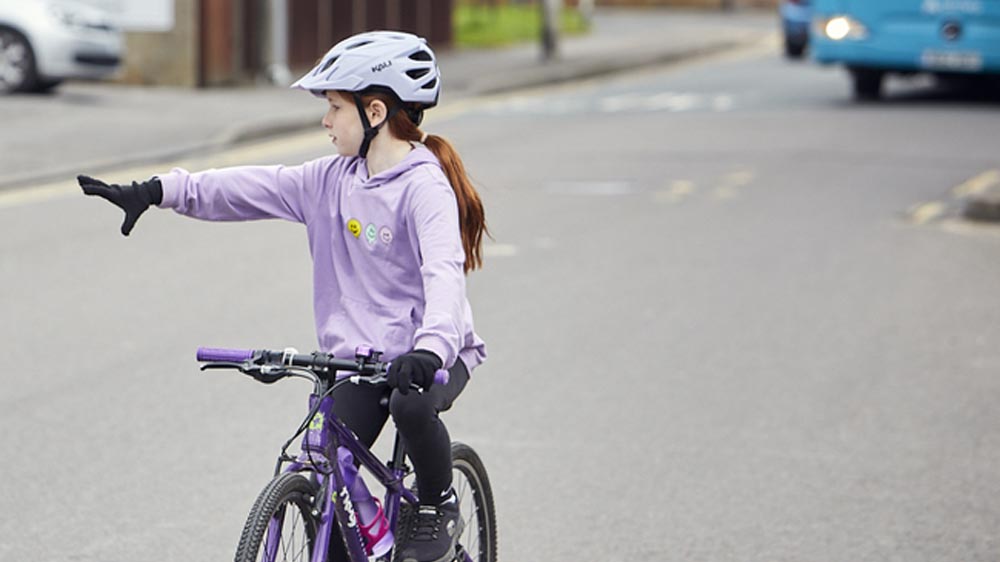
Cycling extends beyond just balance and pedaling; it’s also about understanding how to ride safely and respectfully around others. Teaching your child a few core habits can help them stay alert and ride responsibly.
Hand signals are crucial for communicating intentions to other road users—whether they are drivers, fellow cyclists, or pedestrians. Teach your kids these simple, universal signals:
- Left Turn: Extend the left arm straight out.
- Right Turn: Bend the left arm upward at the elbow, forming an L-shape, OR extend the right arm straight out.
- Stop/Slowing: Bend the left arm downward at the elbow, with the palm facing backward.
Practice these signals in a safe, open area like an empty parking lot or a quiet park path. Make it fun—turn it into a game or a “secret rider code”! Remember, children often learn most effectively by observing. So, consistently use these signals yourself.
Responding to Emergencies: Staying Calm & Prepared
Accidents can happen—minor scrapes, falls, or even unexpected fatigue. Being prepared empowers you to remain calm and address your child’s needs quickly and confidently.
- Carry a Compact First Aid Kit: Always pack a small first aid kit containing essentials such as band-aids, antiseptic wipes, gauze and medical tape, and small scissors or tweezers.
You don’t need a comprehensive setup, just enough to manage minor cuts, scrapes, or blisters.
- Stay Composed & Reassure: If your child falls or gets scared, your immediate reaction sets the tone.
Speak in a calm, reassuring voice, kneel down to their eye level, and reassure them that everything will be okay. A comforting hug can be just as important as applying a bandage.
- Have Emergency Contacts Ready: Save critical emergency numbers in your cell phone and carry a small card with contact information in your saddlebag. If your child rides independently or ahead of you, consider a safety ID tag on their bike or helmet that includes emergency contacts.
Before every ride, discuss what to do if you become separated, like stopping at the last known point or immediately calling a parent.
Read also
Final Thoughts
Riding with your child is more than a workout—it’s a memory in motion. With smart preparation, a reliable bicycle for kids, and plenty of encouragement, you’re setting the foundation for lifelong healthy habits and family adventure.
Need a safe and durable kids bike that grows with your child? Explore Polygon’s collection of junior bikes—built for learning, adventure, and fun.









